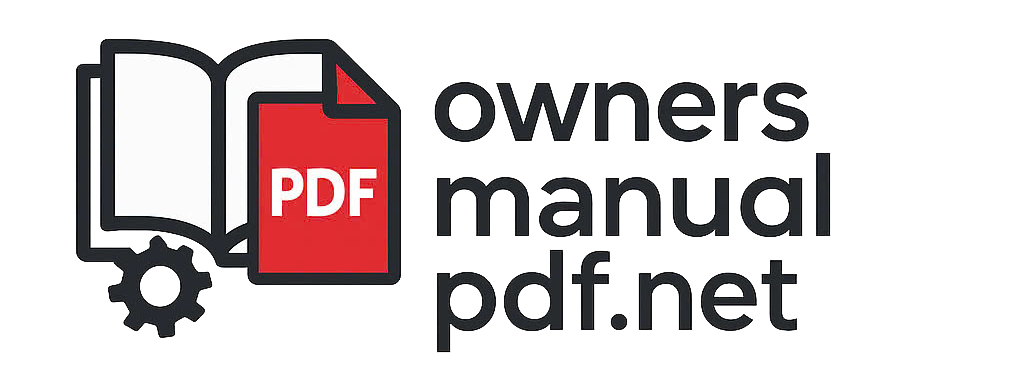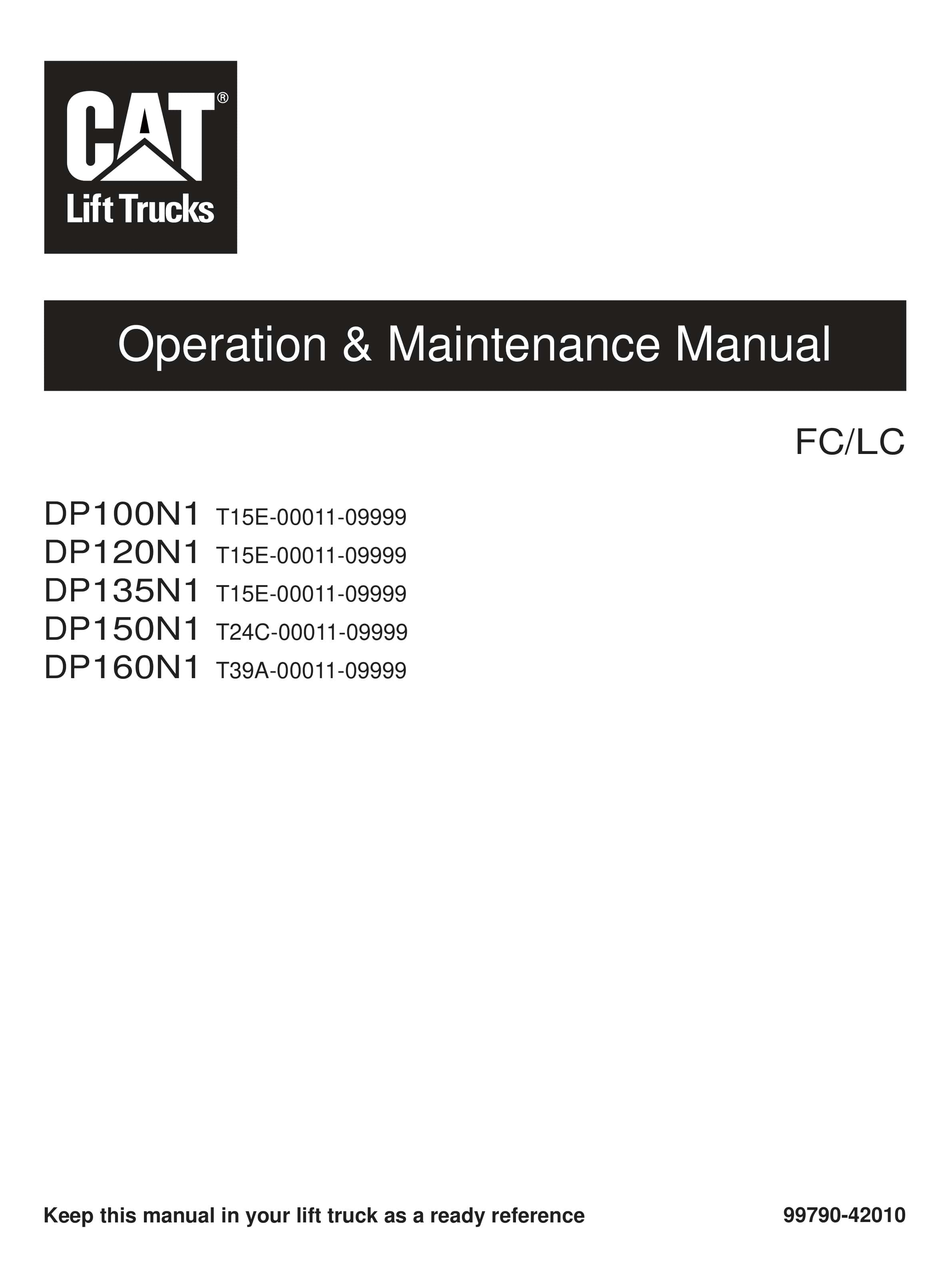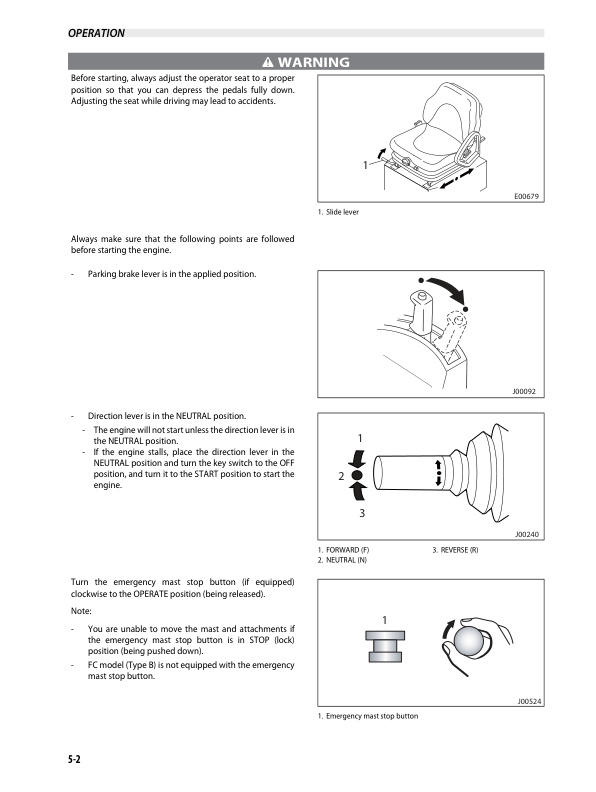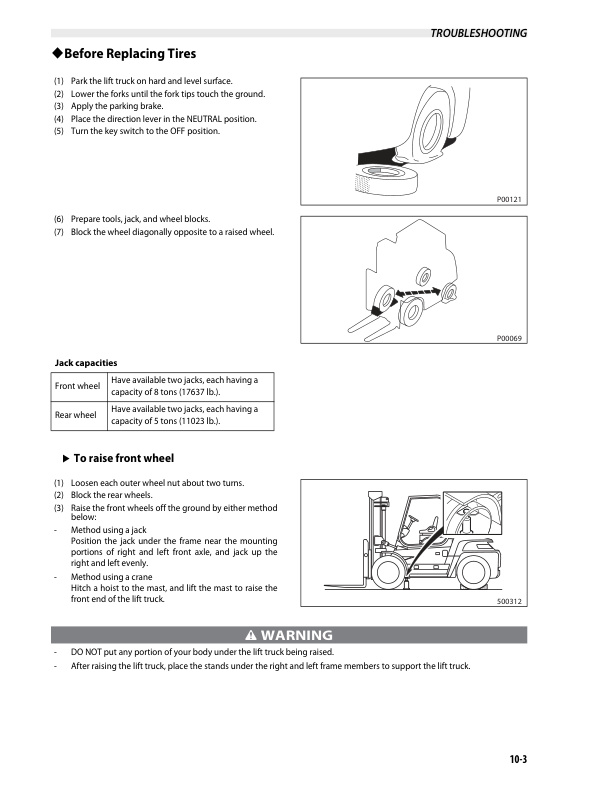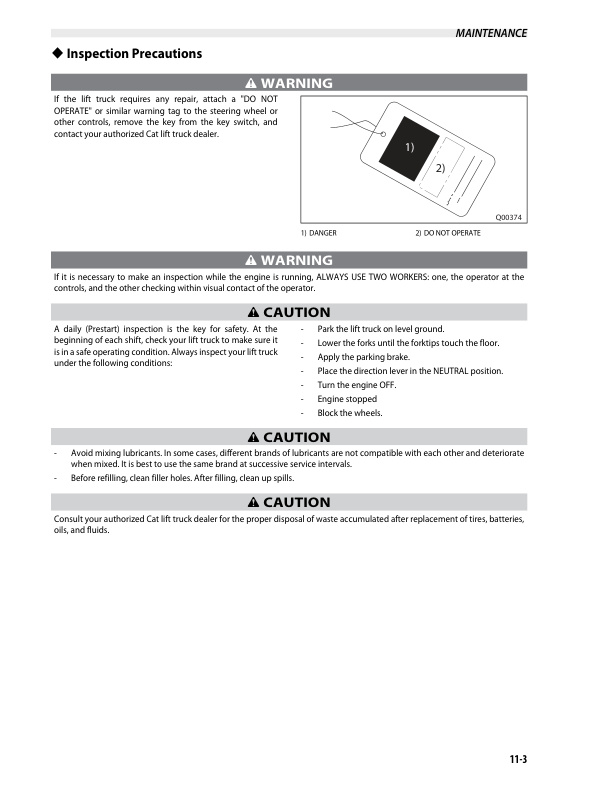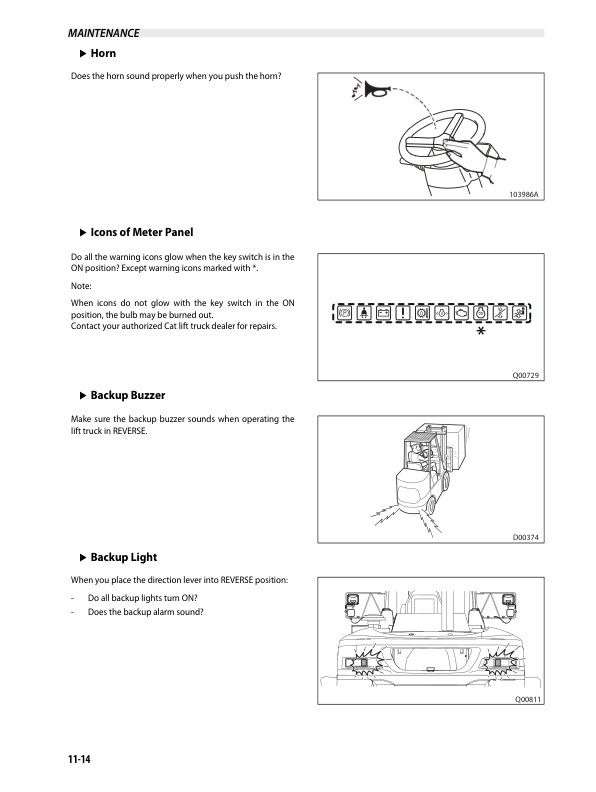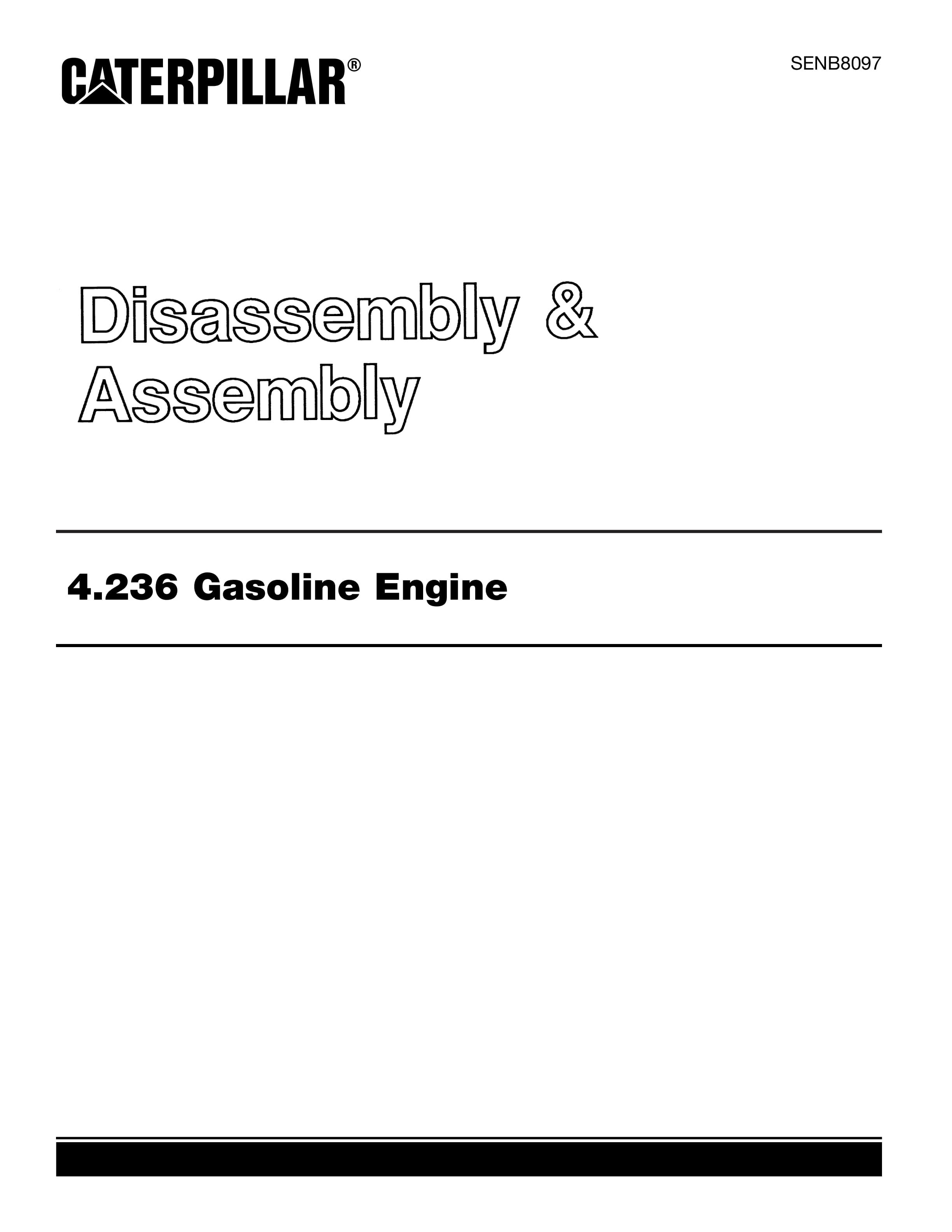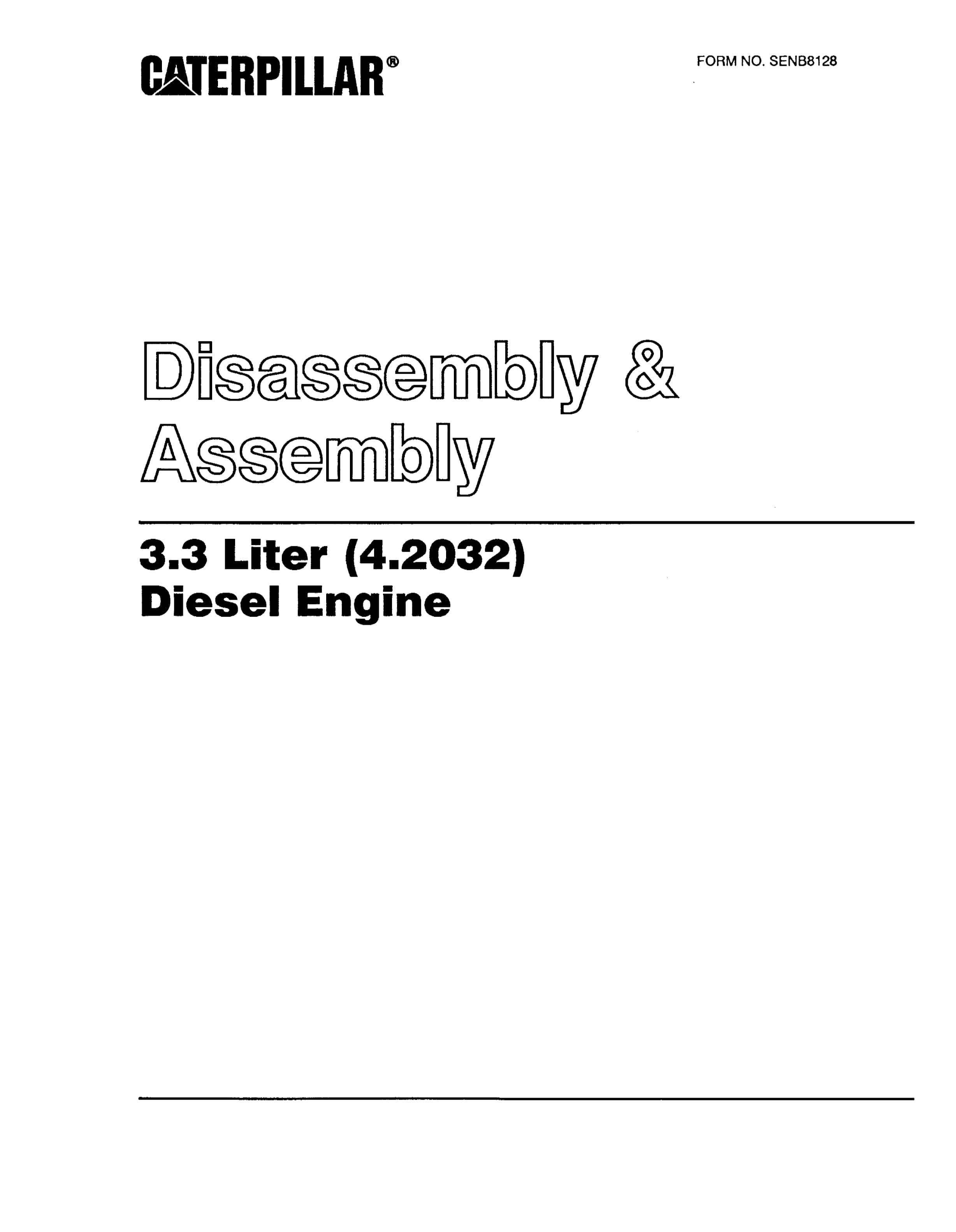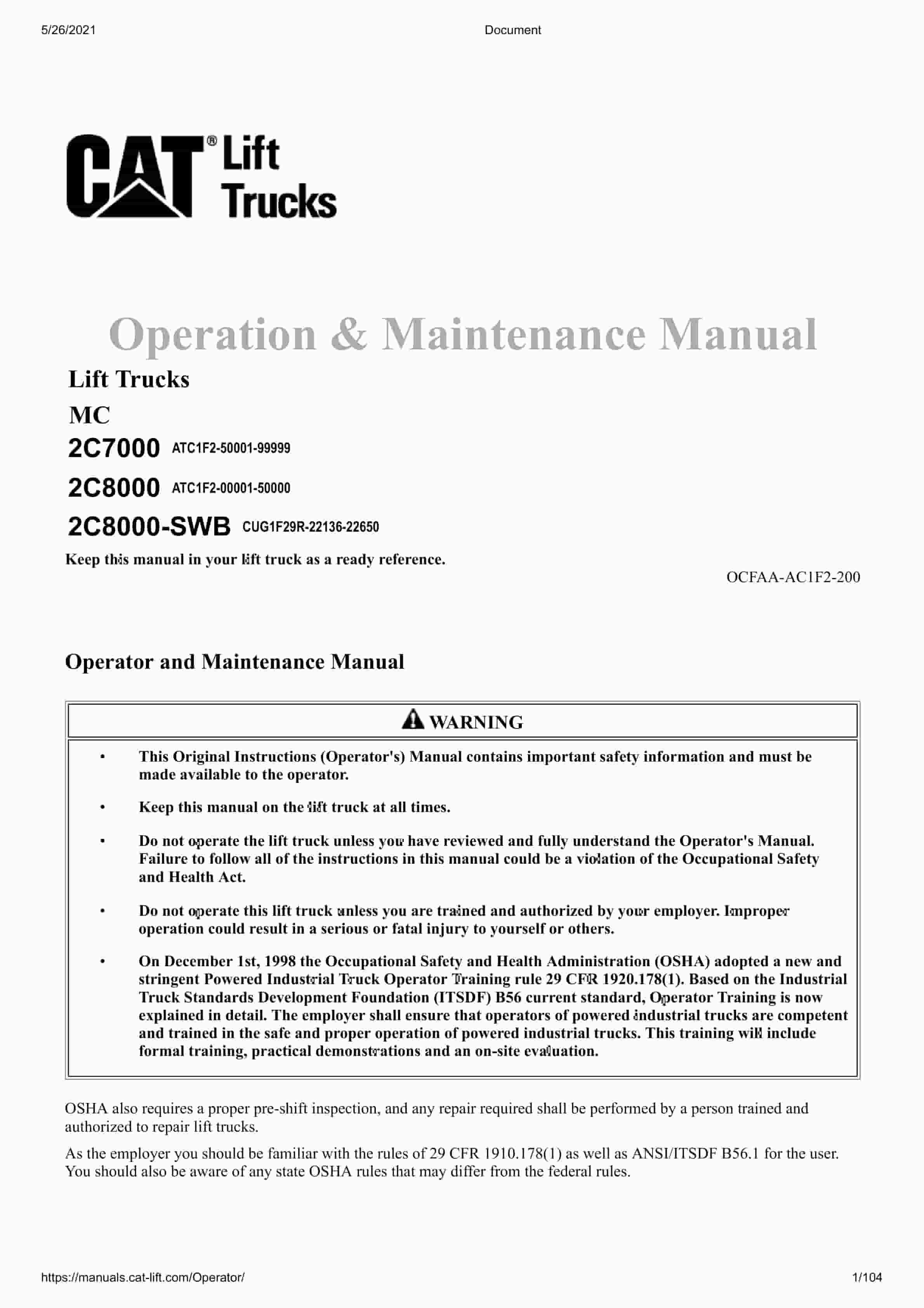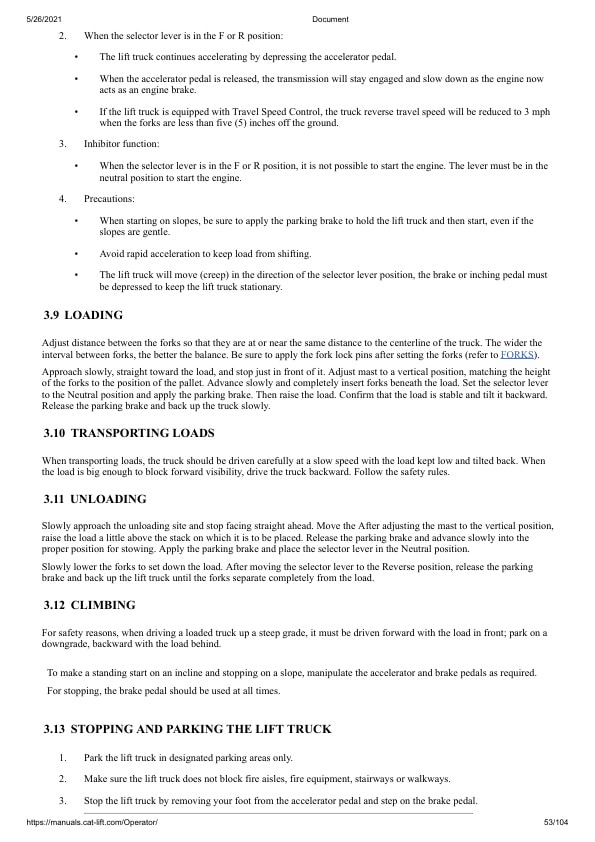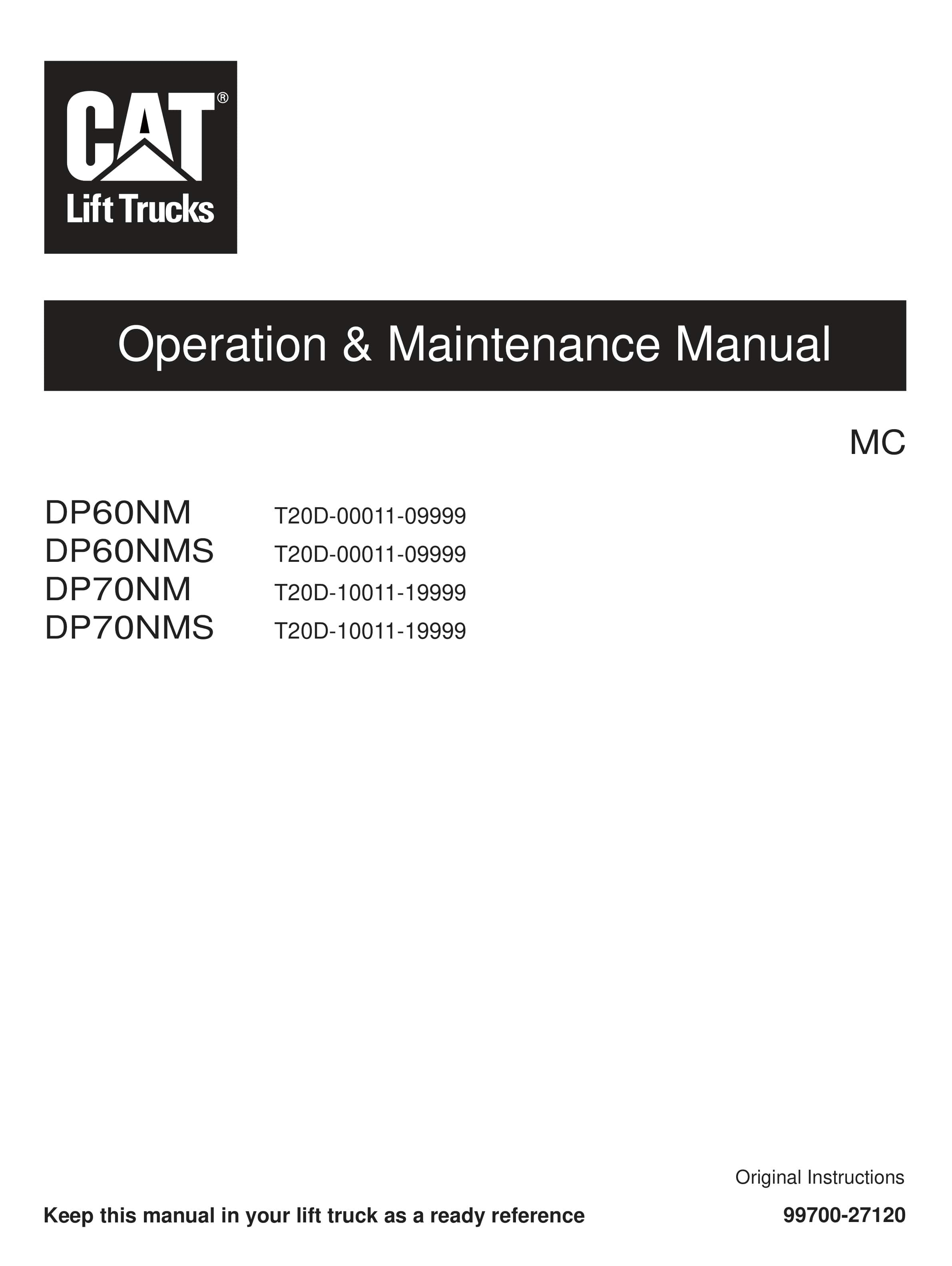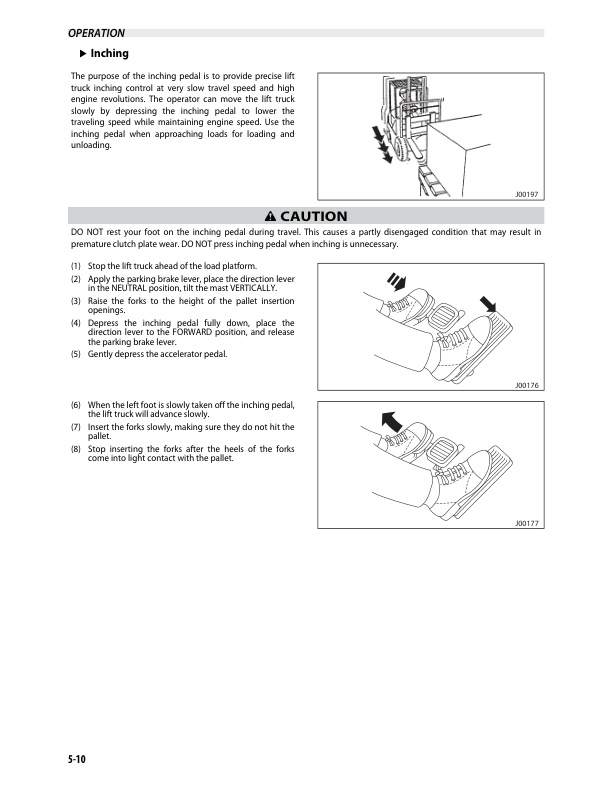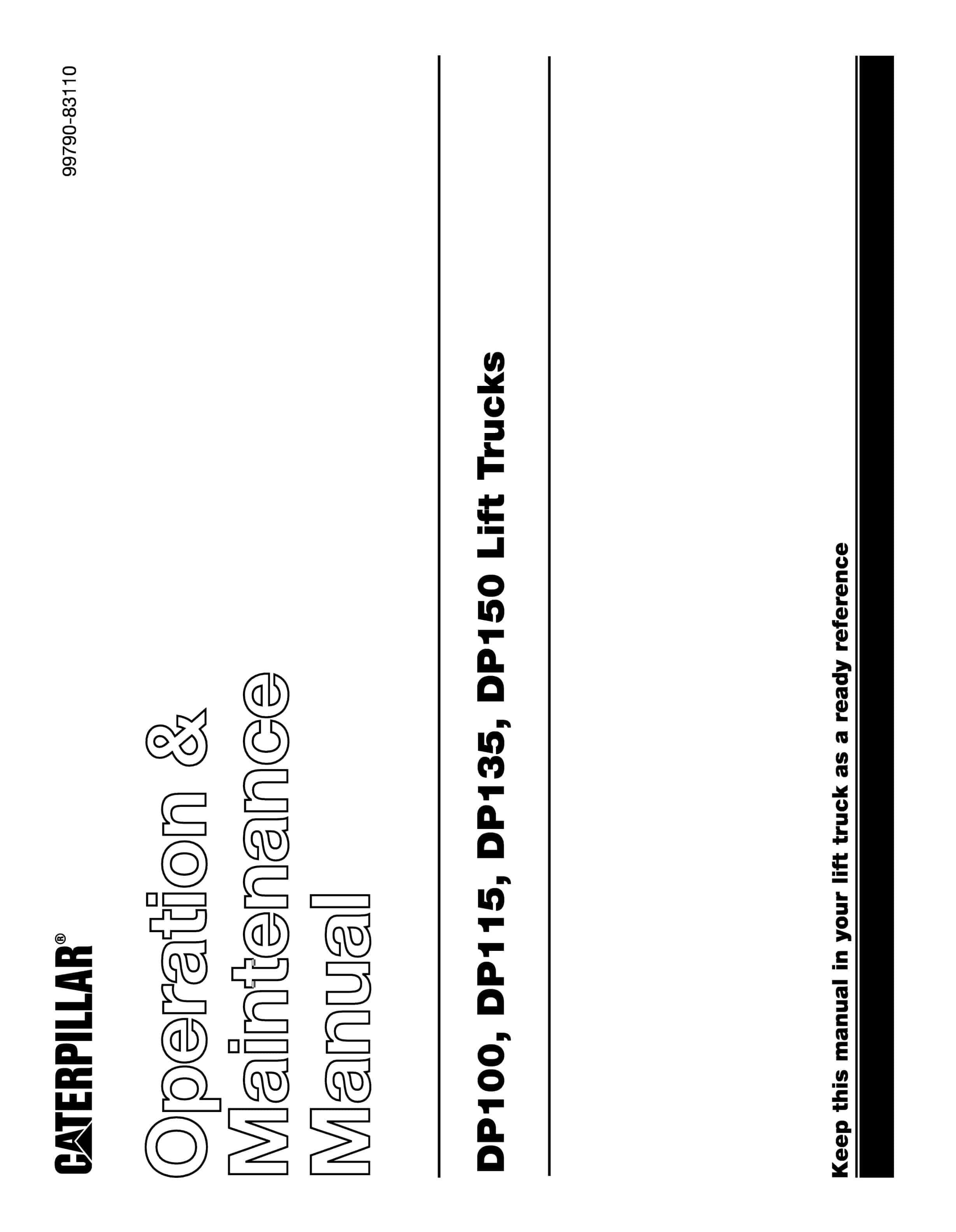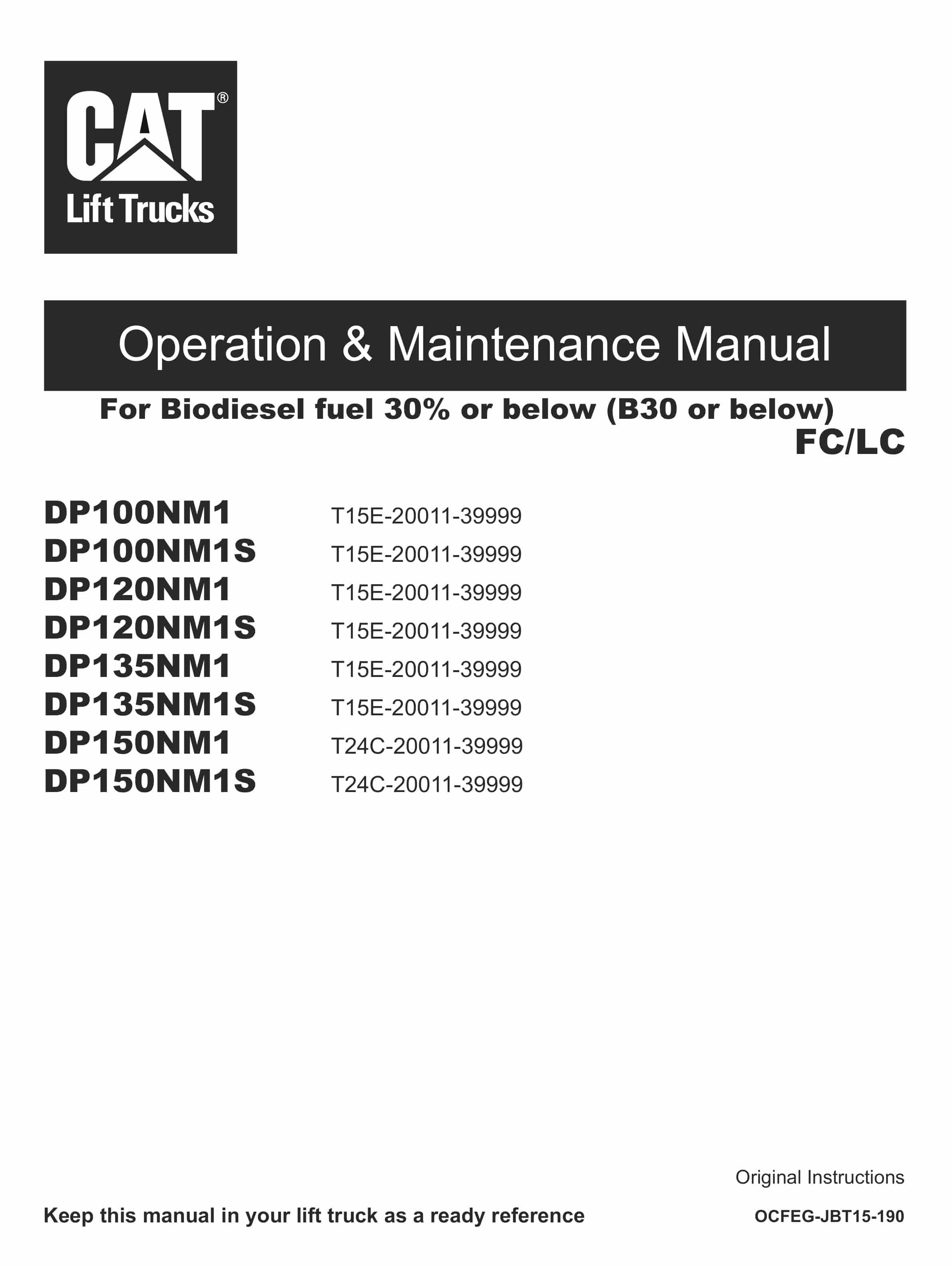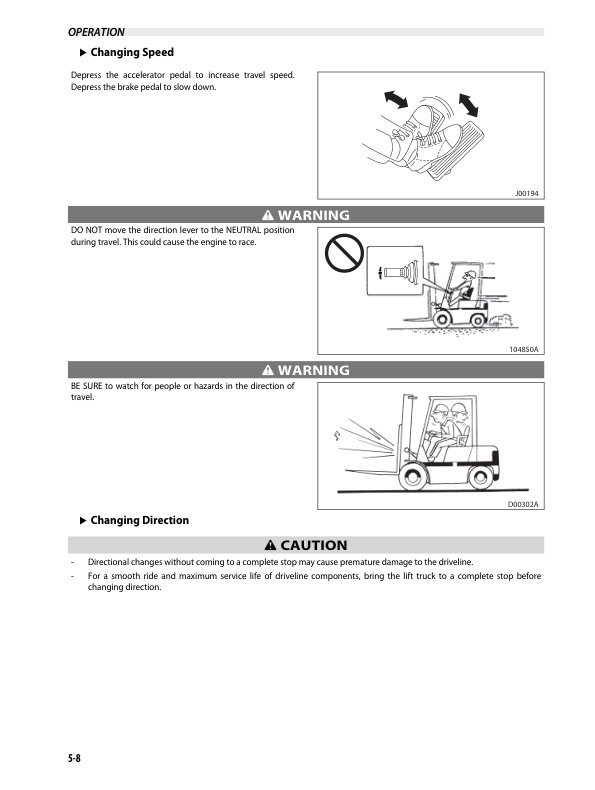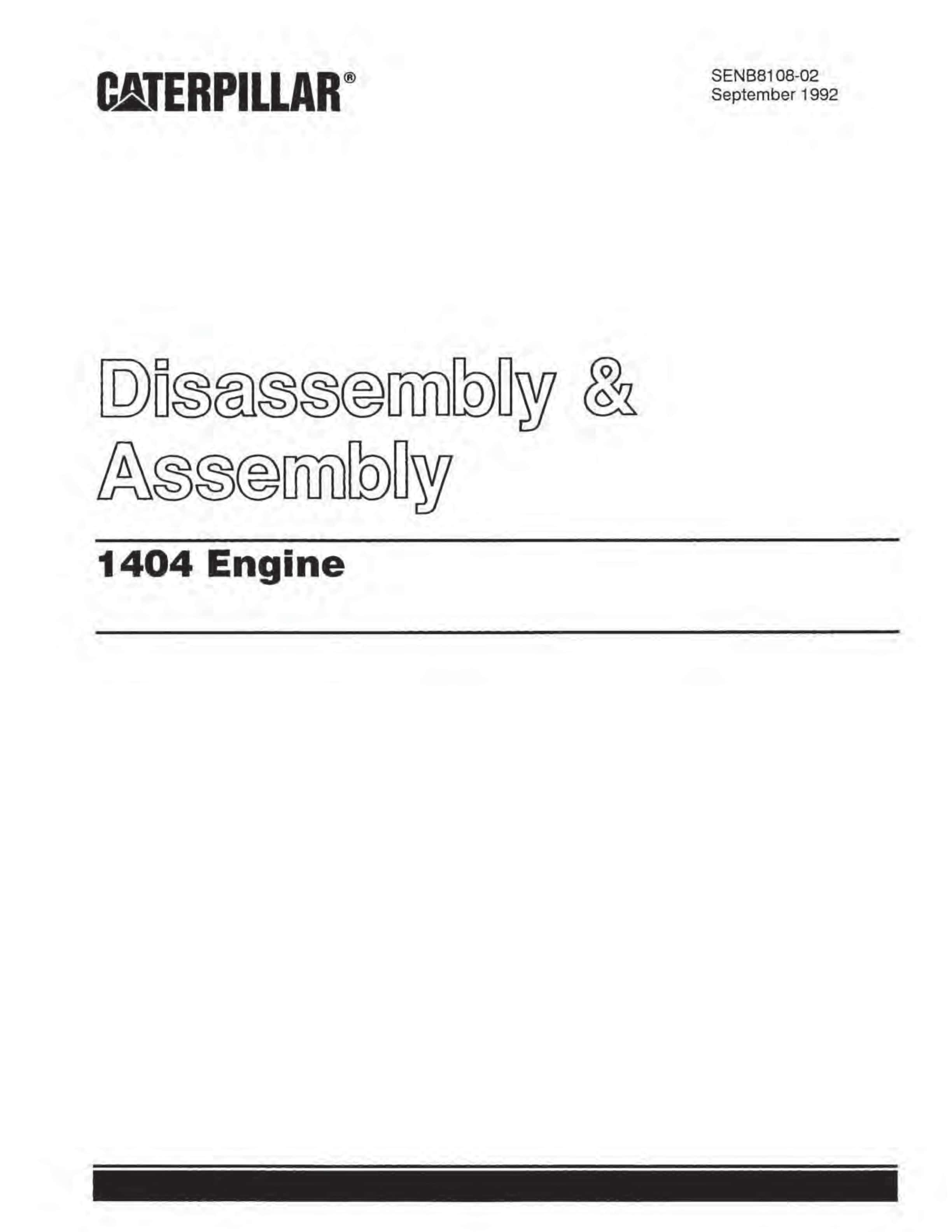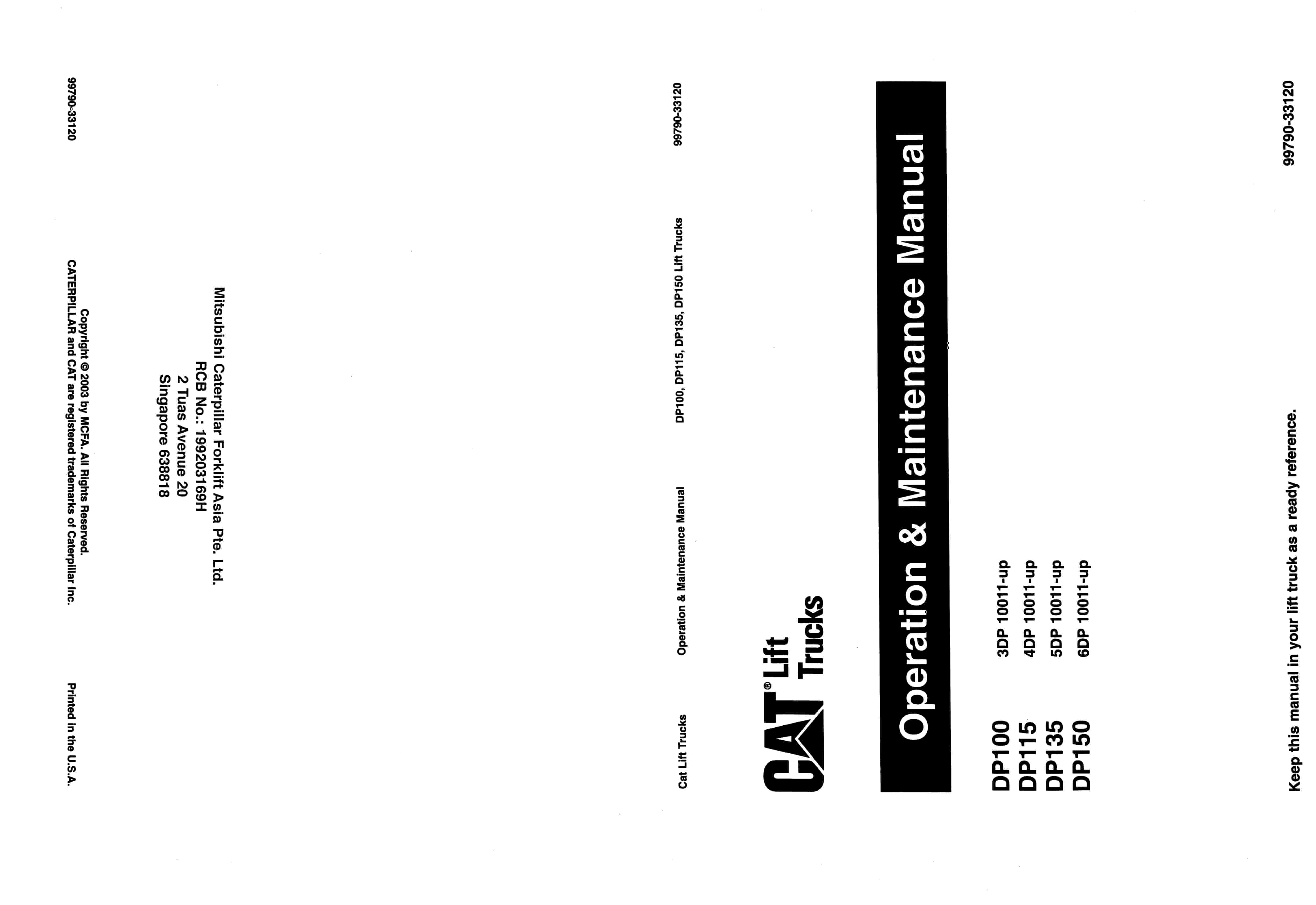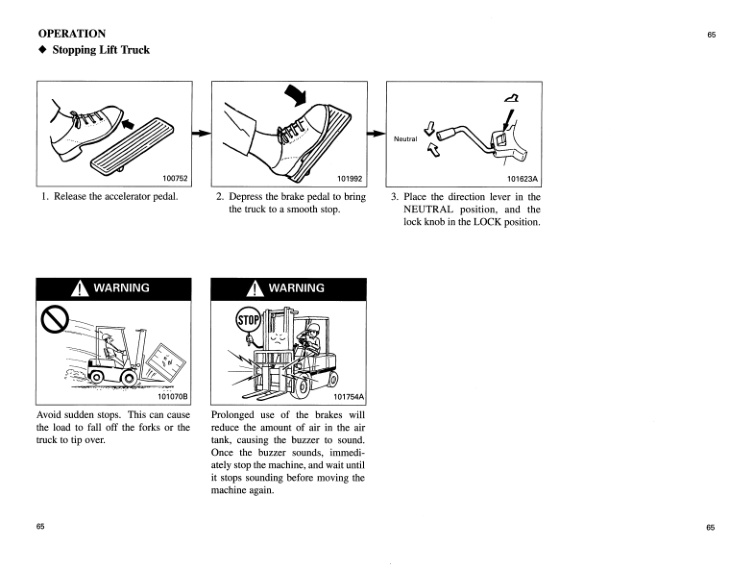Caterpillar DP100N1, DP120N1, DP135N1, DP150N1, DP160N1 Operation and Maintenance Manual 99790-42010
$30.00
- Type Of Manual: Operation and Maintenance Manual
- Manual ID: 99790-42010
- Number of Pages: 222
- Size: 24.3MB
- Format: PDF
-
Model List:
- DP100N1, DP120N1, DP135N1, DP150N1, DP160N1
- 1. FOREWORD
- 1.1. How to Use This Manual
- 1.2. LOCKOUT/TAGOUT
- 2. SAFETY RULES FOR LIFT TRUCK OPERATORS
- 2.1. General
- 2.2. Warning Decals, Location
- 2.3. Description of Danger, Warning, and Caution Decals
- 2.3.1. Fasten Seat Belt Decal
- 2.3.2. Survive in a Tipover Decal
- 2.3.3. Operation Warning Decal
- 2.3.4. Overhead Guard Decal
- 2.3.5. No Access With Engine Running Decal
- 2.3.6. Parking Brake Decal
- 2.3.7. No Riders Warning Decal
- 2.3.8. Pinch Points Decal
- 2.3.9. No One on the Fender
- 2.3.10. No One Under / On Forks and No One Between Mast and Chassis Decal
- 2.3.11. Brake Warning Buzzer Decal
- 2.3.12. Capacity Plate
- 2.3.13. Backup Alarm Decal
- 2.3.14. Operator Restraint System Decal
- 2.3.15. No Contamination Permissible Decal
- 2.3.16. Precautions for Handling ECU Decal
- 2.4. Safety Rules
- 2.5. Operating Precautions
- 2.6. Working Precautions
- 3. KNOW YOUR LIFT TRUCK
- 3.1. Serial Number and Capacity Plate
- 3.2. Electrical Components
- 3.3. Model View
- 3.3.1. FC Model (Type A)
- 3.3.2. FC Model (Type B)
- 3.3.3. LC Model
- 3.4. Driving Switches and Controls
- 3.4.1. Key Switch
- 3.4.2. Direction Lever (Powershift Model)
- 3.4.3. Inching Pedal
- 3.4.4. Turn Signal / Light Switch
- 3.4.5. Steering Column Tilt Lever
- 3.5. Meter Panel
- 3.5.1. Warning Icons Glow Check
- 3.5.2. LCD Screen
- 3.5.3. Warning Icons and Indicators
- 3.5.4. Basic Screen Display
- 3.5.5. Basic Operation
- 3.5.6. When Diagnostic Code Is Shown on Display
- 3.5.7. When Several Warnings Occur Simultaneously
- 3.5.8. Warning Symbols
- 3.5.9. Warning Icons
- 3.5.10. Optional Features
- 3.6. Side Panel
- 3.6.1. Speed Mode Selector Switch
- 3.6.2. Brake Warning Icon
- 3.7. Presence Detection System
- 3.7.1. Mast Interlock System
- 3.7.2. Mast Interlock System Functions
- 3.7.3. Driving Interlock System
- 3.7.4. Driving Interlock System With Operator Restraint Function (For Powershift Models With Australia Specification Only)
- 3.7.5. Driving Interlock System Functions (For Powershift Models Only)
- 3.7.6. Driving Interlock System Functions (For Powershift Models With Australia Specification Only)
- 3.7.7. Neutral System
- 3.7.8. Neutral System Functions
- 3.7.9. Seat Belt Warning Icon
- 3.7.10. Seat Belt Warning Functions
- 3.7.11. Parking Brake Warning Alarm and Warning Icon
- 3.7.12. Parking Brake Warning Functions
- 3.8. Operating Switches and Controls
- 3.8.1. FC Control Box (Type-A)
- 3.8.2. FC Control Box (Type-B)
- 3.8.3. Lift Switch
- 3.8.4. Tilt Switch
- 3.8.5. Lowering Speed Selector Switch (Optional)
- 3.8.6. Direction Switch (Optional)
- 3.8.7. Attachment Switch A/B (Optional)
- 3.8.8. Selector Switch Between Fourth and Fifth Attachment (Optional)
- 3.8.9. Other Controls (Standard)
- 3.8.10. Emergency Mast Stop Button
- 3.8.11. Forward and Backward Adjustment Stopper Knob (FC Control Box Type-A)
- 3.8.12. Up and Down Adjustment Stopper Knob (FC Control Box Type-A)
- 3.8.13. Forward and Backward Adjustment (FC Control Box Type-B)
- 3.8.14. Up and Down Adjustment (FC Control Box Type-B)
- 3.8.15. LC Control Box
- 3.8.16. Lift Lever
- 3.8.17. Tilt Lever
- 3.8.18. Attachment Lever A/B (Option)
- 3.9. Operator Seat
- 3.9.1. Seat Adjustment
- 3.9.2. Forward and Back Adjustment
- 3.9.3. Reclining Angle Adjustment
- 3.9.4. Adjustment of Suspension
- 3.9.5. Pocket for the Operation Maintenance Manual
- 3.9.6. Operator Presence Switch and Buzzer
- 3.10. Seat Belt
- 3.11. Fork Locking Pins
- 3.12. Drawbar Pin
- 3.13. Assist Grips and Foot Step
- 3.14. Engine Hood
- 3.14.1. Hood Latch
- 3.15. Hydraulic Tank Oil Filler Hole
- 3.16. Fuel Filler
- 3.17. Air Tank
- 4. HOW TO AVOID A TIPOVER / HOW TO SURVIVE ONE
- 4.1. Know What Lift Truck Stability Is
- 4.2. Center of Gravity (CG)
- 4.3. Stability and Center of Gravity (Top View)
- 4.4. Lift Truck Stability Base
- 4.5. Capacity (Weight and Load Center)
- 4.6. Capacity Plate
- 4.7. Dos and Donts to Avoid Tipover
- 4.8. How to Survive in a Tipover
- 5. REFUELING
- 5.1. Diesel Engine Equipped
- 6. OPERATION
- 6.1. New Lift Truck Break-in
- 6.2. Before Starting Engine
- 6.3. Starting Engine
- 6.4. Engine Wont Start
- 6.5. After Starting Engine
- 6.6. Before Moving Lift Truck
- 6.7. Lift Truck Operation
- 6.7.1. Changing Speed
- 6.7.2. Changing Direction
- 6.7.3. Operating Techniques
- 6.7.4. Steering (Turning)
- 6.7.5. Inching
- 6.8. Stopping Lift Truck
- 6.9. Parking Lift Truck (After Stopping)
- 7. OPERATING TECHNIQUES
- 7.1. Stacking Methods
- 7.1.1. Stacking Different Size Loads
- 7.1.2. Stacking Small Identical Loads
- 7.1.3. Stacking Large Identical Loads
- 7.2. Handling Loads Safely
- 7.2.1. Adjusting Fork Spread
- 7.3. Before Operating the Lift Truck
- 7.4. Blinking of the Mast Interlock Indicator Icon
- 7.5. Lifting the Load
- 7.6. Traveling With the Load
- 7.7. Unloading
- 7.8. Working on Grades
- 7.8.1. Normal Travel Position
- 7.8.2. Traveling on a Grade
- 7.8.3. Stopping on a Grade
- 7.9. Starting on a Grade (Engine Stalls on a Grade)
- 8. STORING THE LIFT TRUCK
- 8.1. End of Each Shift Storage
- 8.2. Long Term Storage
- 8.2.1. Storage Within Three Months
- 8.2.2. Storage Exceeding Three Months
- 9. TRANSPORTATION HINTS
- 9.1. Lift Truck Loading and Shipping
- 9.2. Lift Truck Lifting and Tie Down Information
- 10. SPECIAL SITUATIONS
- 10.1. Care in Cold Weather
- 10.1.1. Fuel Oils and Lubrication Oils
- 10.1.2. Battery
- 10.1.3. Engine Coolant
- 10.2. Care in Hot Weather
- 10.2.1. Fuel Oils and Lubrication Oils
- 10.2.2. Battery
- 10.2.3. Engine Coolant
- 10.3. Severe Dust or Lint Conditions
- 10.3.1. Air Cleaner Element
- 10.3.2. Engine Oil and Engine Oil Filter
- 10.3.3. Hydraulic Oil
- 10.3.4. Hydraulic Tank Return Filter
- 11. TROUBLESHOOTING
- 11.1. Stalled Engine
- 11.2. If a Tire Blows Out
- 11.2.1. If a Tire Blows out During Travel or Operation
- 11.3. Replacing Tires
- 11.4. Before Replacing Tires
- 11.4.1. To raise front wheel
- 11.4.2. To Remove Front Wheel
- 11.4.3. To Install Front Wheel
- 11.4.4. To Remove Rear Wheel
- 11.4.5. To Install Rear Wheel
- 11.4.6. To Add Air to Tires
- 11.5. Starting With Jumper Cables
- 11.6. If Lights Wont Glow
- 11.6.1. How to Check Fuses and Lights
- 11.7. If the Engine Coolant Temperature Gauge Shows RED Zone
- 11.8. If Torque Converter Oil Temperature Warning Icon Glows (Powershift Model)
- 11.9. If the Lift Truck Wont Change Direction
- 11.10. If the Lift Truck Wont Change Directions (For Powershift Models With Australia Specification Only)
- 11.11. If the Mast Stops Moving
- 11.12. If the Mast and Attachments Malfunction
- 11.13. Diagnostic Codes and Explanations
- 12. MAINTENANCE
- 12.1. General
- 12.2. Inspection Precautions
- 12.3. Maintenance Schedule
- 12.3.1. Every 10 Service Hours or Daily (Prestart), Whichever Comes First
- 12.3.2. Every 50 Service Hours or Weekly, Whichever Comes First
- 12.3.3. One Month (30 days) or 200 Service Hours After Delivery of a New Lift Truck, Whichever Comes First
- 12.3.4. Every 500 Service Hours or 3 Months, Whichever Comes First
- 12.3.5. Every 1000 Service Hours or 6 Months, Whichever Comes First
- 12.3.6. Every 2000 Service Hours or 1 year, Whichever Comes First
- 12.3.7. Every 1 to 2 years
- 12.3.8. Every 2 years
- 12.3.9. to 4 years
- 12.3.10. Every 1500 Service Hours
- 12.3.11. Every 3000 Service Hours
- 12.4. Every 10 Service Hours or Daily (Prestart), Whichever Comes First
- 12.4.1. Faulty Operation Found the Day Before
- 12.4.2. Oil, Fuel, or Coolant Leaks
- 12.4.3. Brake Pedal
- 12.4.4. Parking Brake Lever
- 12.4.5. Service Brake
- 12.4.6. Air Tank
- 12.4.7. Engine Coolant
- 12.4.8. Icons of Meter Panel
- 12.4.9. Backup Buzzer
- 12.4.10. Backup Light
- 12.4.11. Stop Light
- 12.4.12. Battery
- 12.4.13. Mast Interlock System
- 12.4.14. Driving Interlock System
- 12.4.15. Parking Brake Warning Alarm and Warning Icon
- 12.4.16. Seat Belt Warning Icon and Alarm
- 12.4.17. Engine (Exhaust, Noise, and Vibration)
- 12.4.18. Engine Oil
- 12.4.19. Overhead Guard
- 12.4.20. Assist Grips
- 12.4.21. Seat Belt
- 12.4.22. Seat Adjustment
- 12.4.23. Hydraulic Oil
- 12.4.24. Tilt Cylinder Socket Nuts
- 12.4.25. Lift Chains
- 12.4.26. Mast and Forks
- 12.4.27. Wheel Nuts
- 12.4.28. Tires and Rims
- 12.4.29. Steering Wheel
- 12.4.30. Accelerator Pedal
- 12.4.31. Inching Pedal
- 12.4.32. Transmission Oil
- 12.5. Every 50 Service Hours or Weekly, Whichever Comes First
- 12.5.1. Alternator Belt
- 12.5.2. Air Cleaner
- 12.6. One Month (30 Days) or 200 Service Hours After Delivery of a New Lift Truck, Whichever Comes First
- 12.6.1. Cooling Oil (in Wet Disk Brake)
- 12.6.2. Cooling Fan
- 12.6.3. Battery Electrolyte Specific Gravity
- 12.6.4. Engine Oil and Oil Filter
- 12.6.5. Bolts and Nuts
- 12.6.6. Primary Fuel Filter
- 12.6.7. Secondary Fuel Filter
- 12.6.8. Hydraulic Tank Return Oil Filter and Strainer
- 12.7. Every 500 Service Hours or 3 Months, Whichever Comes First
- 12.7.1. Primary Fuel Filter
- 12.7.2. Secondary Fuel Filter
- 12.8. Lubrication Chart
- 12.8.1. Fan Belt Pulleys
- 12.8.2. Mast Support
- 12.8.3. Fork Guide Bar
- 12.8.4. Mast Strips Surfaces
- 12.8.5. Mast and Lift Bracket Side Rollers
- 12.8.6. Lift Chains
- 12.8.7. Tilt Socket Pins
- 12.8.8. Tilt Cylinder Pins
- 12.8.9. Tie Rod Pins
- 12.8.10. Rear Axle Supports
- 12.8.11. Universal Joints
- 12.9. Every 1000 Service Hours or 6 Months, Whichever Comes First
- 12.9.1. Air Dryer Desiccant
- 12.9.2. Air Cleaner
- 12.10. Every 2000 Service Hours or 1 Year, Whichever Comes First
- 12.10.1. Brake Fluid
- 12.10.2. Air Dryer Desiccant
- 12.11. Parts to be Replaced Periodically
- 13. SERVICE DATA
- 13.1. Fuel Information
- 13.1.1. Fuel Specifications
- 13.2. Coolant Information
- 13.2.1. Coolant Water
- 13.2.2. Antifreeze Solution
- 13.3. Recommended Fuels and Oils
- 13.4. Specifications (Standard Models)
- 13.5. Refill Capacities
- 13.6. Capacities and Lift Truck Weight (Standard Models)
- 14. TO THE CAT LIFT TRUCK OWNER
- 14.1. The Importance of Genuine Parts
- 14.2. Proper Disposal of Your Lift Truck
- 14.3. Instructions for Ordering Parts
- 14.4. Service Registration
Caterpillar Operation Manual PDF
Caterpillar 4.236 Gasoline Engine Disassembly and Assembly SENB8097
Caterpillar Operation Manual PDF
Caterpillar 3.3 Liter (4.2032) Diesel Engine Disassembly and Assembly SENB8128
Caterpillar Operation Manual PDF
Caterpillar 2C7000 – 2C8000-SWB Lift Trucks Operation and Maintenance Manual OCFAA-AC1F2-200
Caterpillar Operation Manual PDF
Caterpillar DP60NM, DP60NMS, DP70NM, DP70NMS Operation and Maintenance Manual 99700-27120
Caterpillar Operation Manual PDF
Caterpillar DP100, DP115, DP135, DP150 Lift Trucks Operation and Maintenance Manual 99790-83110
Caterpillar Operation Manual PDF
Caterpillar Operation Manual PDF
Caterpillar DP100NM1 to DP150NM1S Operation and Maintenance Manual OCFEG-JBT15-190
Caterpillar Operation Manual PDF
Caterpillar 1404 Engine Disassembly and Assembly SENB8108-02
Caterpillar Operation Manual PDF
Caterpillar 1404 Engine Specifications Systems Operation Testing and Adjusting SENB8080-05
Caterpillar Operation Manual PDF
Caterpillar DP100, DP115, DP135, DP150 Operation and Maintenance Manual 99790-33120
